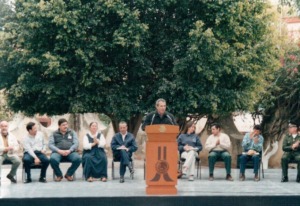
By Martha Ruiz Corzo
The Sierra Gorda Biosphere Reserve is something for all Queretanos to be proud of and we all need to understand its importance. The reserve is of great biological value; therefore it is essential to conserve its forests and jungles, because they provide ecosystem services, such as thermal regulation, carbon capture and storage, water capture and storage and it is home to many species of flora and fauna that are endemic to this green jewel in Central Mexico.
Declared a Biosphere Reserve in 1997, the Sierra Gorda has since been a federally protected territory. It is the last well-conserved area found in the center of Mexico, geographically situated at the meeting point of the neartic and neotropical bioregions. It is a sanctuary for wildlife, a refuge for species such as the jaguar, reptiles, 34 species of oaks and 30% of Mexico’s butterflies. The green macaw as well as many other bird species make their home in the Sierra Gorda, with 97 species of migratory birds taking shelter here during the winter months. Millions of years-worth of evolutionary processes and mathematics has made this place a natural wonder and it is one of Mexico’s treasures that has the bio-capacity to sustain the conditions needed for society’s well-being.
Grupo Ecológico Sierra Gorda began as a civil society organization in 1987, made up of local members with a deep understanding of the area who were concerned by the environmental destruction and ignorance and indifference of the local authorities. They were also concerned by the lack of development opportunities for the 638 communities found in the area, who were living in extreme poverty and who faced losing their valuable natural capital whilst failing to improve their living conditions. So, what started as a local grass roots movement has turned into a movement setting international precedents in how to tackle poverty and climate change. A model that uses the organization of civil society to conserve natural heritage and activities to rescue and protect natural resources. It is a model that can be used by other countries that want to conserve the natural environment and where communities facing extreme poverty are living in biodiversity-rich areas.
It is the only protected area in the country that emerged from a grassroots movement, coupled with the support of Enrique Burgos García who, during his time in government, had the vision to support the conservation of one third of Querétaro state in 1997. With the participation of civil society and the federal decree, a milestone was reached in the protection of this valuable natural area. The publication of the official document, “The Reserve Management Program,” regulated the impacts of development and brought about the adoption of best practices on multiple levels. It has successfully mitigated a variety of impacts that would have irreparably damaged the integrity of the ecosystem, which is a sanctuary for wildlife. It is our shared natural heritage, which we all must protect.
